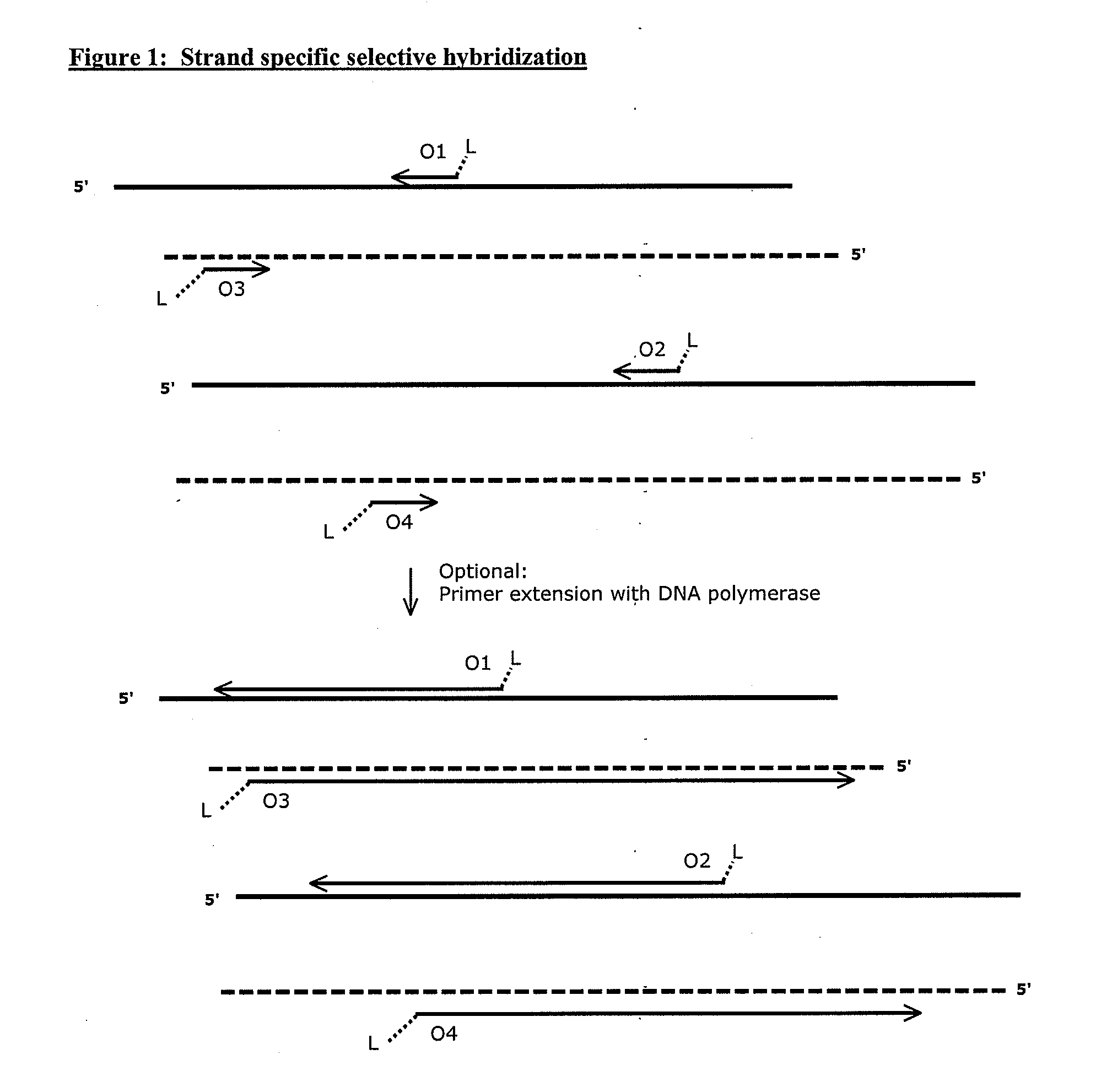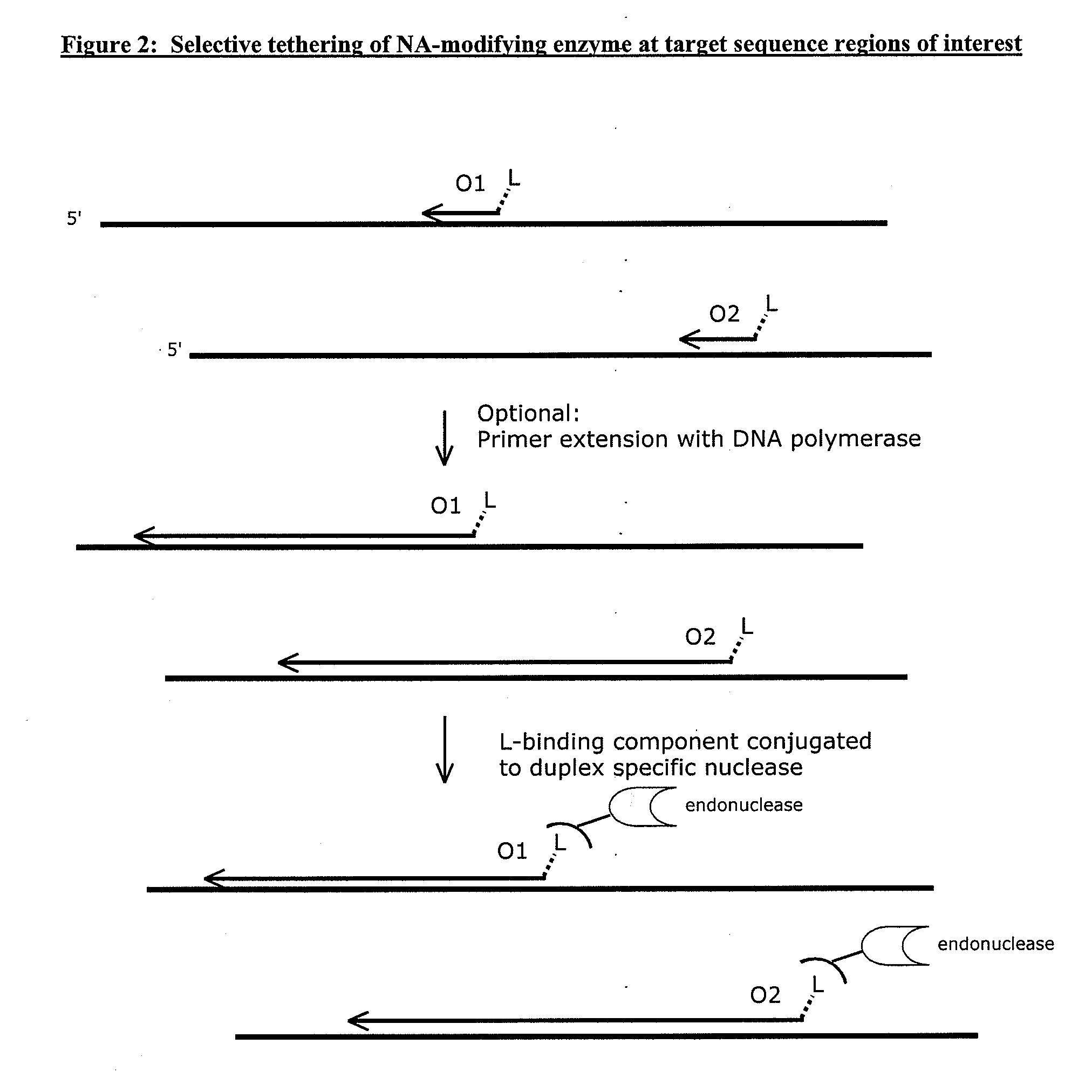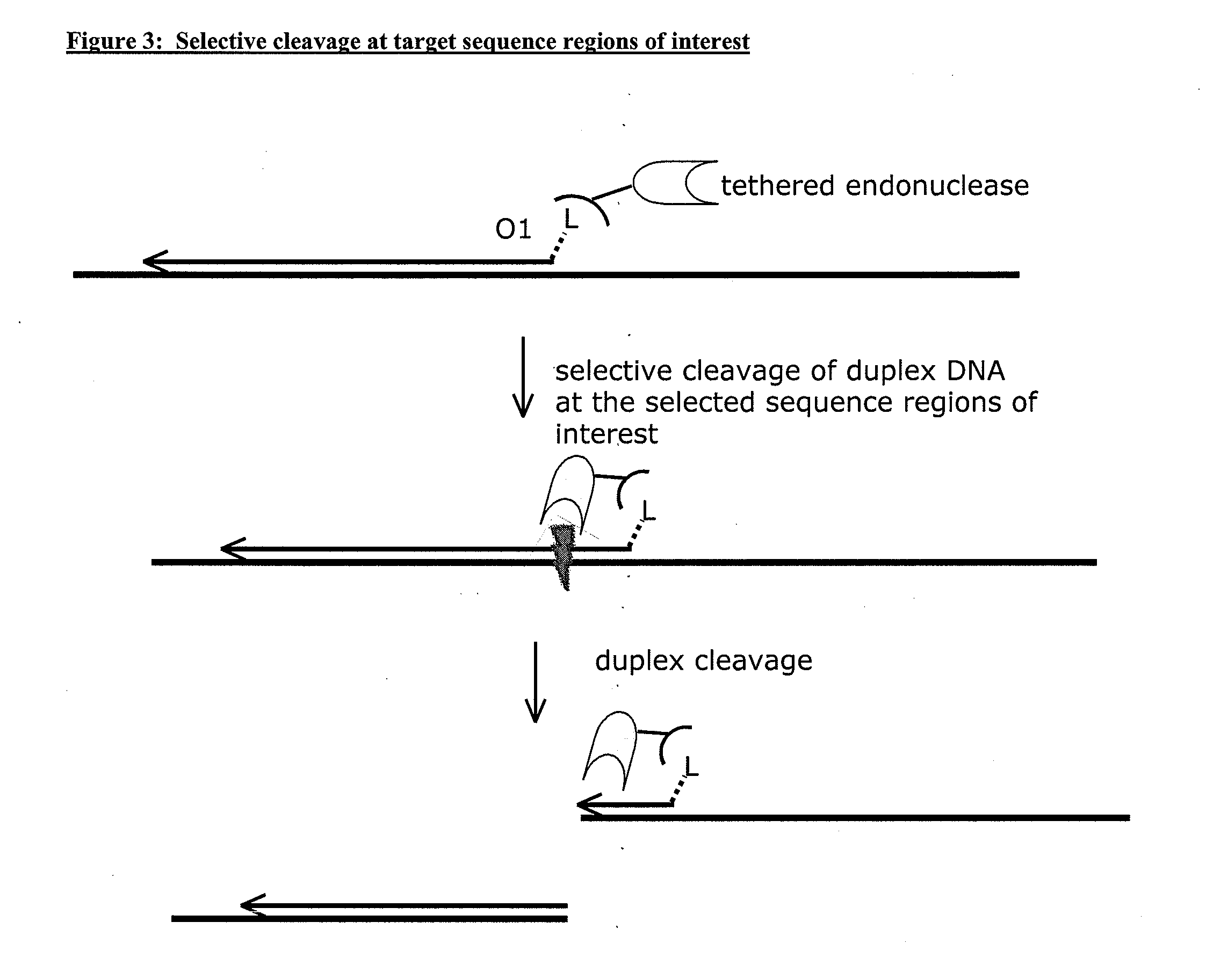Compositions and methods for targeted nucleic acid sequence selection and amplification
a nucleic acid sequence and sequence technology, applied in the direction of nucleotide libraries, library creation, enzyme stabilisation, etc., can solve the problems of large quantity of input dna, low reaction efficiency, and requirement for sequestration, so as to increase efficiency and facilitate automation
- Summary
- Abstract
- Description
- Claims
- Application Information
AI Technical Summary
Benefits of technology
Problems solved by technology
Method used
Image
Examples
example 1
Method 1, Sequence-Specific Enrichment of a Target Region of Interest from Denatured Double-Stranded Genomic DNA
[0112]Genomic DNA sample is mixed with a solution comprising oligonucleotides designed to specifically hybridize to the sequence regions of interest to be enriched and amplified. The oligonucleotides of the invention comprise a label linked to one end, preferably the 5′-end. The label can be any member of a specific binding pair, for example biotin. The ligand (label) can be attached to the end of the oligonucleotides by a linker. The length and composition of the linker will depend on the desired flexibility. Various linkers and methods for synthesis are well known in the art. The length and composition (% GC) of the oligonucleotide are selected to provide efficient hybridization to the multiplicity of sequence regions of interest at a predetermined stringency. The design requirements are well known in the art. Methods used for the design and selection of oligonucleotides...
example 2
Method 2, Sequence-Specific Enrichment of a Target Region of Interest from Non-Denatured Double-Stranded Genomic DNA
[0124]Targeted tethering of a NA-modifying enzyme can be achieved by sequence-specific triplex formation as shown in FIGS. 8 and 9. Oligonucleotides comprising a label or ligand are designed to specifically hybridize to dsDNA sequence regions of interest in a complex genomic DNA sample to form triplex. The targeted tethering of the NA-modifying enzyme is carried out in a manner similar to that of Method 1. The modifying enzyme is selected to directly or indirectly cleave the dsDNA target upstream of the triplex, and the targeted cleavage site is rendered suitable for ligation of adapters as described for Method 1. The generation of enriched and amplified copies of the multiplicity of sequence regions of interest is carried out similar to that described above (Method 1).
[0125]The method is useful for generation of copies of strand specific sequence regions of interest f...
example 3
Use of Sequence-Specific Enrichment of a Target Region of Interest from Denatured Double-Stranded Genomic DNA for Diagnosing Cancer
[0126]Genomic DNA is isolated from a patient sample (e.g., a tumor sample) and mixed with oligonucleotides that comprise a biotin linked to the 5′ end through a 12 carbon spacer linker. The genomic DNA is denatured, and the biotin linked oligonucleotides are hybridized to the genomic DNA and extended with a DNA polymerase. A “blunt-cutter” endonuclease conjugated to streptavidin is added to the reaction mixture, and the endonuclease binds the biotin linked oligonucleotides via the conjugated streptavidin. The endonuclease cleaves both strands of the duplex formed by the hybridized and extended oligonucleotide. Adapters are added to the end of cleaved DNA. The adaptors permit binding of chimeric primers for subsequent linear amplification of the cleaved DNA. The adaptors also provide binding sites for primers that permit Next Generation Sequencing (e.g., ...
PUM
| Property | Measurement | Unit |
|---|---|---|
| diameter | aaaaa | aaaaa |
| nucleic acid- | aaaaa | aaaaa |
| nucleic acid | aaaaa | aaaaa |
Abstract
Description
Claims
Application Information
 Login to View More
Login to View More - R&D
- Intellectual Property
- Life Sciences
- Materials
- Tech Scout
- Unparalleled Data Quality
- Higher Quality Content
- 60% Fewer Hallucinations
Browse by: Latest US Patents, China's latest patents, Technical Efficacy Thesaurus, Application Domain, Technology Topic, Popular Technical Reports.
© 2025 PatSnap. All rights reserved.Legal|Privacy policy|Modern Slavery Act Transparency Statement|Sitemap|About US| Contact US: help@patsnap.com



